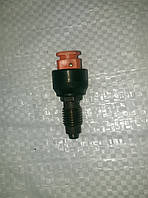Regulirovka Karbyuratora Benzopili Motor Sich 270

In fact, the total size of Ryabushko-idz.ru main page is 583.3 kB. This result falls beyond the top 1M of websites and identifies a large and not optimized web page that may take ages to load. 15% of websites need less resources to load. Comment4, 158,. Ryabushko 3 chastj reshebnik idz 122. You are trying to download a ready-made solutions IDZ 12.1 (Math. Series) Here are presented all the decisions of this option. Mathematical solutions in detail. Feb 28, 2015.
Members of the Muon g-2 collaboration at Fermilab are developing this lead fluoride crystal, 14 centimeters long, and the large-area SiPMs for the experiment’s detector. They will help scientists measure more precisely the energies of particles from decaying muons, as well as the decay time of the particles. The experiment at Fermilab is under construction in the new MC-1 building. It aims to measure with unprecedented precision — 140 parts per billion — a property of the muon called the anomalous magnetic dipole moment. The effort will improve upon the famous experiment at Brookhaven National Laboratory, which finished data taking in 2001. The new Fermilab experiment aims to improve the precision with 20 times more data and by reducing key systematic uncertainties.
No information is available for this page.Learn why.

These factors significantly affect the design of the detector, which measures the muon decay data used to deduce the magnetic dipole moment. Now, after six years and four beam tests, members of the original team from Brookhaven along with several new collaborators have finished testing a production prototype of a new calorimeter — the detector that measures particle energies and decay time — for the Fermilab experiment. The new calorimeter design improves on its Brookhaven counterpart by reducing something called detector pile-up, which occurs when two particles strike a detector in rapid succession, and with custom electronics that can withstand higher signal rates. To address these issues, the collaboration will segment the electromagnetic calorimeter into 54 independent elements, and the signal in each of these will have an ultrashort duration in time. The Fermilab accelerator complex will deliver a beam of polarized muons into a storage ring, which guides the muons around a circular path. Fermilab will deliver the muons at a much higher rate than the Brookhaven experiment. The detectors, positioned along the inside of the ring, are designed to operate near, but not disturb, the highly uniform and strong magnetic field of the storage ring.
A combination of lead fluoride crystals, which convert deposited energy into Cherenkov photons (light), and devices called silicon photomultipliers (SiPMs), which collect photons, serves these purposes well. This group participated in the Muon g-2 calorimeter test beam run at SLAC. After a positive muon stored in the magnetic ring decays into a positron and a pair of neutrinos, the positron curls inward and hits a calorimeter station. Its energy is converted into many thousands of Cherenkov photons in the 14-centimeter-long crystals. The conversion process takes less than a few nanoseconds. Contoh proposal kegiatan 17 augustus peringatan hut ri 72 de. Some thousands of these photons successfully propagate through the crystal and strike a SiPM adhered to the crystal’s rear face. This photodetector preserves the very fast nature of the incoming photon pulse and faithfully encodes it into an equally narrow charge pulse, which is finally digitized by electronics.
The collaboration performed a at SLAC of a prototype array of 28 crystals read out by 16-channel large-area SiPMs. This electromagnetic calorimeter is a half-size prototype for one of the 24 stations that are required for the experiment. Analysis of the data indicates that the new design will handle the high rate at Fermilab and reduce the dreaded pile-up as planned. These are the principal members of the Muon g-2 calorimeter team. From left: David Hertzog, Aaron Fienberg and Jarek Kaspar, all of the University of Washington. To date, the detector team has received 500 of the 1,300 crystals needed and is continuing to prepare for the production of the custom SiPM boards and the overall mechanical housings and stands.
- среда 17 октября
- 79